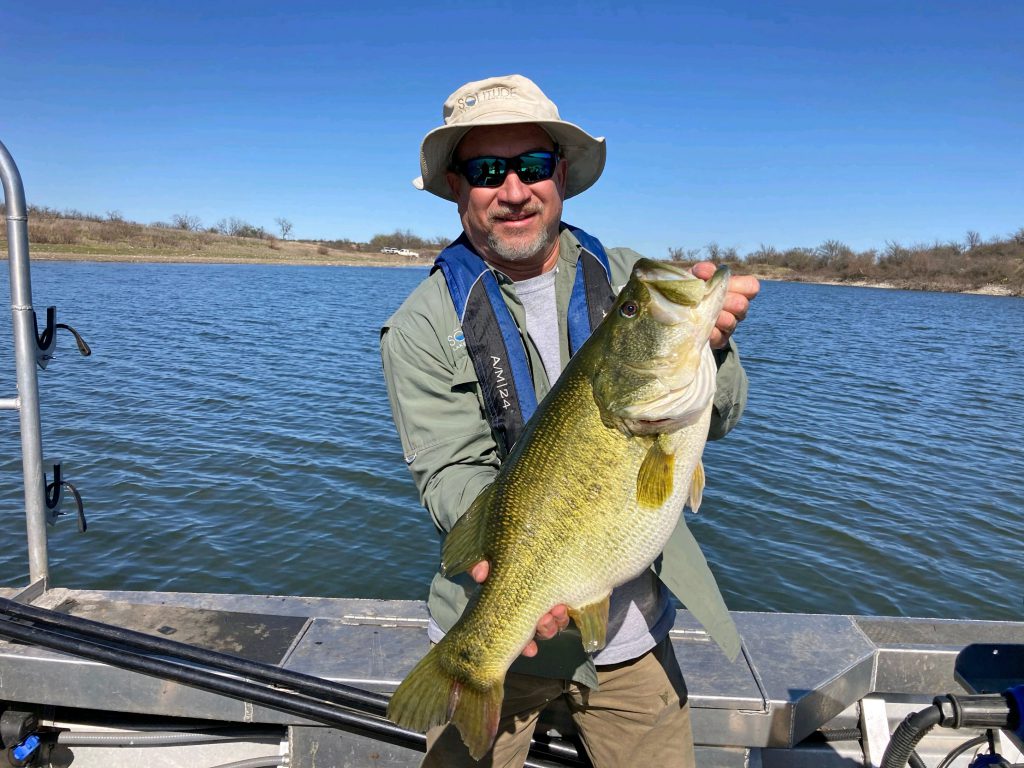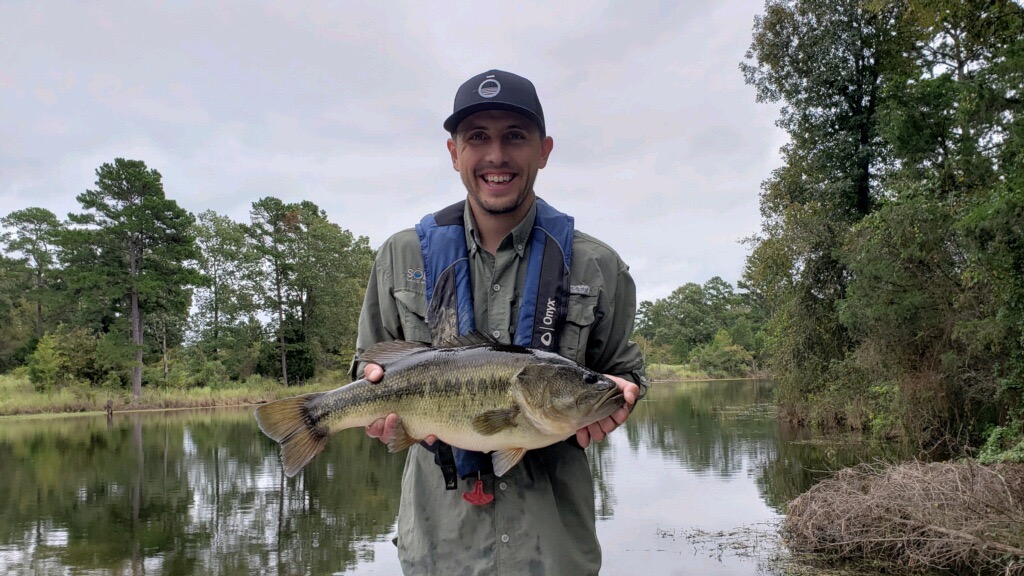
Plankton Management with Fertilizing
Fisheries managers often use pond fertilization to improve the biological productivity of a waterbody, resulting in improved fish growth and abundance. As with any management strategy, geographic location, pond owner goals, and primary use of the waterbody must be considered prior to implementation. If you are interested in the fertilization process (also referred to as productivity manipulation), it’s necessary to first understand how it works in an aquatic environment. Second, it’s important to understand where it is applicable—or not. Last, you should have a thorough idea of what to expect should you choose to employ this technique in your pond.

How Does Fertilization Work?
The food web in a pond starts with primary producers, a.k.a. phytoplankton. Dissolved nutrients in the water promote blooms of microscopic algae, which in turn provide food for larger zooplankton and other invertebrates. These organisms are preyed upon by young game fish and forage fish alike. Fertilization artificially increases the concentration of naturally occurring nutrients in the pond, like nitrogen and phosphorus. Together, these nutrients provide the fuel that drives this desirable algae bloom and the resulting biological productivity at all levels of the ecosystem.
Fertilized ponds are capable of significantly increased productivity when compared to infertile ponds. In most cases, fertilized ponds can support 3-4 times more fish biomass compared to unfertilized ponds. As productivity increases, forage fish species thrive on the abundance of food, resulting in improved gamefish growth rates. This also serves to improve the overall number and quality of fish available to anglers. Another potential benefit of the algae bloom is a reduction in rooted plant growth due to the reduced light penetration. Dense algae blooms can effectively “shade out” other photosynthetic organisms. This increased productivity is not without consequence; the potential for oxygen depletion and pH fluctuation is greater in fertilized ponds. This risk can be mitigated by complementary management strategies such as pond aeration and liming. In order to avoid potential issues, diligent water quality monitoring is a key component of any pond fertilization strategy.

Types Of Lake Or Pond Fertilizer:
There are two categories of lake or pond fertilizer that are typically used in waterbodies: organic and inorganic. Organic fertilizers are plant- or animal-based and include things like manures and plant materials. These fertilizers typically require some decomposition to release their nutrients, so it is important to apply them in well–oxygenated areas to help promote the proper nutrient release. Organic pond fertilizers are bulky and contain fewer nutrients per pound when compared to inorganic alternatives. Additionally, animal-based fertilizers such as poultry litter should not be applied to ponds used for recreation, due to the potential presence of bacteria that are harmful to humans.
Inorganic fertilizers are commercially manufactured and don’t require decomposition, so nutrients are immediately available upon application. Nutrient ratios are much simpler to fine-tune due to the known concentration in these products. Inorganic pond fertilizers come in many different varieties and nutrient grades and can be purchased as a liquid, granule, powder, or time-release formulation. Your fisheries management professional can recommend a formulation and application program that best fits your fishery goals.

When Should I Fertilize My Pond?
Productivity manipulation is a complex technique, and appropriate application rate, timing, and frequency can vary greatly by region. There are, however, a few guidelines that are widely accepted by fisheries managers when it comes to fertilizing your pond
Fertilizer is best applied in the spring or early summer once water temperatures reach 60°F. Algae growth is significantly diminished below this threshold, and fertilization will not be effective. Fertilization can continue through the summer months as needed to maintain the “bloom” of algae. Secchi depth, or water clarity, is often used to assess the bloom and determine if more or less fertilizer is necessary.
As the water temperature drops below 60°F in the fall, fertilization is typically discontinued. In northern climates, particularly, fertilization can increase the potential for winter fish kills under the ice and is only recommended if other management techniques are employed to mitigate this risk.
Fish stocking and recruitment rates must be aligned with the carrying capacity of the pond, which is determined in large part by productivity. If fertilization is ceased once fish populations have been artificially increased, you run the risk of unbalancing the fish community—potentially resulting in poor health, low numbers, and stunted growth.

Other Considerations When It Comes To Pond Fertilizing:
Applying more pond fertilizer does not always equate to more growth as there are many factors that influence pond productivity. As with most aspects of freshwater management, achieving balance is critical. Maintaining desirable nitrogen to phosphorus ratio is essential to boost the right kind of productivity. It’s also important to note that not all ponds are good candidates for fertilization. While newly created ponds tend to be nutrient-poor and respond well to traditional fertilization, in many established ponds or instances where supplemental fish feed is supplied a nitrogen-only strategy may be applicable.
Likewise, fertilizers may just be ineffective in your particular fishery. For instance, in ponds with significant flow, fertilization is not a good idea because nutrients will be flushed from the pond before they can be used (and are likely to cause issues downstream as the nutrient-laden water enters other waterbodies). If a pond has an existing nuisance plant or filamentous algae problem, fertilization will exacerbate these issues. Fertilization of ponds containing muddy water should also be avoided as the turbid water shades out productivity, rendering fertilization ineffective.
Although many factors must be considered before fertilizing your pond, this technique can significantly improve fish growth and abundance when appropriately applied by an experienced fisheries management professional. If you want to improve angling opportunities and enhance your fishery, fertilization may help you reach that goal. Remember, proper planning, professional implementation, and continued monitoring are central elements of successful management and will help ensure your lake or pond continues to meet your goals for years to come.









